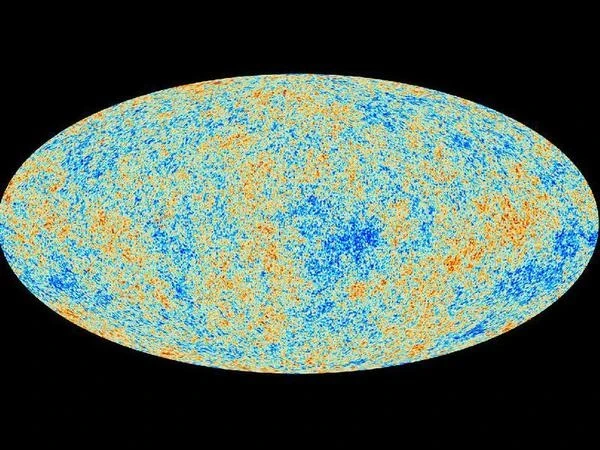
The observable universe corresponds to the region of spacetime from which light has had time to reach us since the Big Bang, given the age of the universe (\(13.8 \, Ga\)) and the speed of light. This defines a radius of about \(46 \, Gly\) (billion light-years). Beyond this, information cannot yet reach us, as light from these regions has not had time to travel to us.
The cosmic microwave background (CMB) was emitted about 380,000 years after the Big Bang, when electrons and protons combined to form the first hydrogen atoms. Before this time, the universe was opaque to photons, trapped in a dense plasma. When recombination occurred, the universe became transparent, and light could travel freely. This radiation, now cooled to \(T \approx 2.725 \, K\), reaches us as microwaves.
The temperature of the CMB is remarkably uniform, but tiny fluctuations (\(\Delta T/T \sim 10^{-5}\)) are present. These anisotropies reveal primordial density differences, which later led to the formation of galaxies, clusters, and large-scale structures. The acoustic peaks in the anisotropy power spectrum trace the physics of the early universe: interactions between photons, baryons, and gravity.
The study of the CMB has shown that the geometry of space is almost flat (\(\Omega_k \approx 0\)). This means that Euclidean laws apply on large scales. The characteristic angular size of the first acoustic peak sets the sound horizon at the time of recombination. Thus, the CMB serves as a cosmological ruler: it measures the scale of the observable universe and its dynamic parameters.
Note: The term recombination refers to the era, about 380,000 years after the Big Bang (redshift \(z \approx 1100\)), when the temperature of the universe dropped below \(3000 \, K\). Electrons bound to protons to form the first hydrogen atoms, making the universe transparent to photons. These photons now constitute the cosmic microwave background. Some older publications mention ≈300,000 years, but Planck 2018 measurements specify the value at about 380,000 years.
| Parameter | Measured Value | Physical Meaning | Comment |
|---|---|---|---|
| Age of the Universe | \(13.80 \pm 0.02\) Ga | Time elapsed since the Big Bang | Sets the total time available for cosmic evolution |
| Average Temperature of the CMB | \(2.725 \, K\) | Fossil microwave radiation | Confirms that the spectrum corresponds to an almost perfect blackbody |
| Baryonic Density | \(\Omega_b h^2 = 0.0224 \pm 0.0001\) | Fraction of ordinary matter | Essential for explaining nucleosynthesis and star formation |
| Dark Matter Density | \(\Omega_c h^2 = 0.120 \pm 0.001\) | Invisible matter governing gravity | Explains the rapid formation of galactic structures |
| Hubble Constant | \(H_0 = 67.4 \pm 0.5 \, km/s/Mpc\) | Current expansion rate | Value from the CMB is lower than that measured locally (Hubble tension) |
| Spectral Index of Perturbations | \(n_s = 0.965 \pm 0.004\) | Signature of cosmic inflation | Shows that fluctuations are not exactly scale-invariant |
| Spatial Curvature | \(\Omega_k \approx 0\) | Flat universe on large scales | Confirms the prediction of inflationary models |
Sources: ESA Planck (2013-2018), NASA COBE/WMAP, ACT, SPT, NASA LAMBDA Archive.
Despite its precision, the study of the CMB is not without constraints and areas of uncertainty. These arise from both the fundamental properties of the universe and the limitations of our instruments.
These limitations explain why CMB results are always associated with uncertainty intervals and why new missions (such as LiteBIRD or CMB-S4) are expected. They aim to refine the measurement of CMB polarization, particularly the B-mode, which could directly reveal the primordial gravitational waves of inflation.